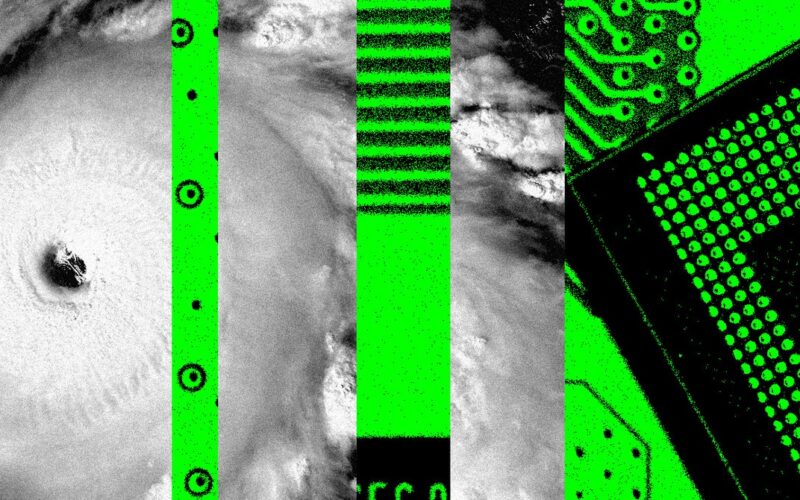A spokesperson for Sibelco said: “As of September 26th, we have temporarily halted operations at the Spruce Pine facilities in response to these challenges.
“We are working closely with our local team to safely restart operations as soon as we can and are actively coordinating with local authorities and other partners to manage the situation. Our top priority remains the health, safety, and wellbeing of our employees, as well as ensuring the security of the Spruce Pine facility.”
Quartz Corp did not reply to an immediate request for comment from WIRED.
Viral social media posts have claimed that due to the flooding, global production of semiconductors could halt. This doomsday scenario is unlikely, but experts are gravely concerned about the impact the flooding could have on the tech industry and the economic ramifications of prolonged supply chain pressures caused by the shutdown of the site.
“The key thing will not be just the floods, as bad as they are,” says Chris Hackney, a researcher in human geography at Newcastle University in the UK. “The damage to infrastructure—roads, transport, power, and mining equipment—will stop production for a while. There’s potential for landslides.”
Hackney adds that “any disruption to supply chains will have an impact on prices and production of high-ended electronics and tech.”
Tom Bide, a senior scientist at the British Geological Survey, believes it’s possible the disaster will prove mi nimally disruptive due to stockpiling and other kinds of contingency work.
“The impact on the tech industry will very much depend on how long it takes them to get operations running again,” he says. “It is likely most manufacturers have some level of stockpiles so there will be some ‘slack’ in the system. If the issues are temporary this may have no discernible effect.”
Bide estimates it would take around a month for any serious impacts to be felt.
Other researchers, however, warned that serious costs are likely to be incurred as a result of the disaster. Penn says he “would be surprised if there were not a flinch felt, if not more.”
“Any rippling impact on the global tech sector will depend on the scale of the damage. There is little publicly available data on HPQ reserves globally. The physical products that Spruce Pine produces do not remain there. They are shipped to other countries—often Norway—for the processing and refining stages before distribution around the world.”
Penn, who has coauthored a forthcoming paper on Spruce Pine alongside independent researcher Fran Baker Kurdi, tells WIRED that the episode is likely to trigger interacting climate impacts.
“I’d imagine that industry would turn to the use of lower purity material if indeed there is a rippling shortage,” he says. “This is a shame as the industrial processes required to purify silicon are energy intensive and ecologically damaging. In other words, this tragic encounter with climate instability in North Carolina could have a knock-on effect that exacerbates climate instability elsewhere. It’s a vicious cycle.”
Penn also cites a number of serious chemical pollution cases that Quartz Corp has been at the center of in recent decades.
Between 1981 and 2018, he notes, Quartz Corp faced six violation cases for contamination offenses, including toxic chemical leakages. In 2018, the company leaked hundreds of gallons of hydrofluoric acid into a nearby river basin. The discharge caused a fish kill and was one of a number of water rules violations Quartz Corp has committed over the last decade, some of which have resulted in fines.
“One lesson to take from this is that an ‘AI’ future is not inevitable,” Penn adds. “Even if Spruce Pine persists intact, the damage done to local communities is a stark reminder of the need to make infrastructural commitments that sync with ecologies rather than working against them.
“I fear that AI investments and climate instability are on a collision course. This may be the first domino to fall.”
Source link
lol

